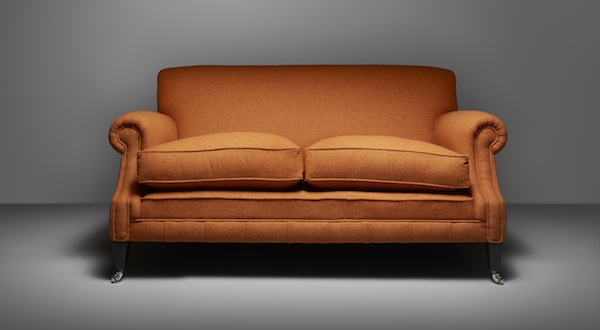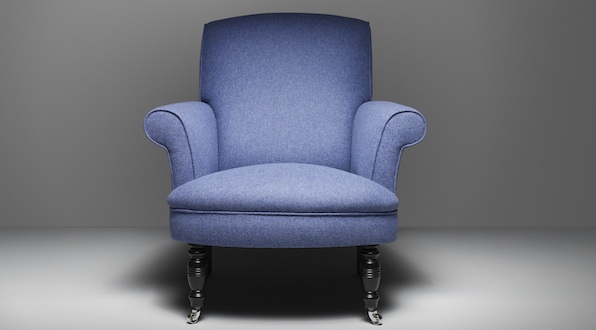From leather to wool
Tracing its pedigree back to 1780, family business Fleming & Howland is an expert at creating handmade, bespoke chesterfields. Having worked solely in leather for most of its history, it has just announced that it will launch a range of fabric collections.…
Marking a step towards a more contemporary aesthetic, the use of wool also means that Fleming & Howland’s bespoke pieces will now appeal to new audiences, mainly the contract market. “Wool is a perfect material for heavy use,” Paul Fleming, MD of the company says. “It is naturally fire retardant and stain resistant, contrary to popular belief.”
Wool has naturally strong fibres, being taken from an animals coat, and as a result is long-lasting. “If you think of well-made tailored cloths in wool,” suggests Fleming, “they get great wear over time, no sag, and keep their tight lines in the shape. Leather can get quite stretched over time. It has no bounce back into shape.”
Each bespoke piece takes approximately 18 man-hours to complete and the range, which includes the Victoria love seat, Barbican sofa and Havelock Ellis library chair, will also be available in leather and linen, with bespoke fabrics available upon request.
Related Links:
Fleming & Howland - company profile
NEW: Sign up for SuperyachtNewsweek!
Get the latest weekly news, in-depth reports, intelligence, and strategic insights, delivered directly from The Superyacht Group's editors and market analysts.
Stay at the forefront of the superyacht industry with SuperyachtNewsweek
Click here to become part of The Superyacht Group community, and join us in our mission to make this industry accessible to all, and prosperous for the long-term. We are offering access to the superyacht industry’s most comprehensive and longstanding archive of business-critical information, as well as a comprehensive, real-time superyacht fleet database, for just £10 per month, because we are One Industry with One Mission. Sign up here.
NEW: Sign up for
SuperyachtNewsweek!
Get the latest weekly news, in-depth reports, intelligence, and strategic insights, delivered directly from The Superyacht Group's editors and market analysts.
Stay at the forefront of the superyacht industry with SuperyachtNewsweek





